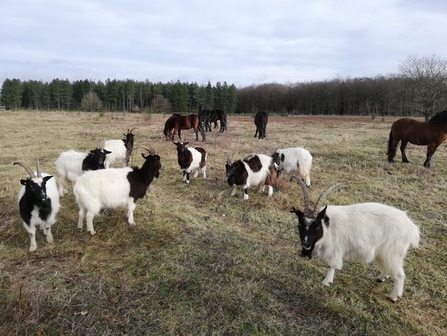Twelve rare breed goats are settling into their new life with Norfolk Wildlife Trust after retiring from their conservation role on the north Norfolk coast.
The goats were previously deployed by North Norfolk Council to graze vegetation along the coastal cliffs and slopes of Cromer.
Laura Davey, from NWT’s Nature Conservation team said, ‘The goats are currently in the Brecks, assisting the ponies and reserves team in managing the heathlands there. Along with another six young goats we purchased last year, they are settling in very well and have formed a happy little herd. In the next few years, we hope to introduce them to one of our herd of Billy goats, to increase the numbers of these important grazing animals. All our goats are registered with the Bagot Goat Society, so each will help boost this rare breed.
The goats will help to maintain the diverse flora and aid the restoration of the heathland areas, helping to develop a more varied structure to the vegetation. The goats’ hardy nature and ability to forage in rough scrub make them excellent conservation grazing animals.
Laura continued, ‘Conservation grazing is an important tool for the management of the reserves. The livestock naturally maintain the sward height of the grass and other scrub to allow rare plant species to thrive. While the cattle, sheep and ponies prefer to graze the grass and smaller plants, goats will browse hedges and trees as well as grass.’
The breed spent many centuries as semi-wild stock so have a nervous character, this also tends to lend itself to conservation work as they are more self-reliant and unlikely to approach people. As the animals are ‘organic’ their dung is free from toxins and medication allowing invertebrates such as dung beetles to thrive.


